The best portable monitors: second screens you can use on the move
The ideal second screen for your laptop or tablet, these are the best portable monitors
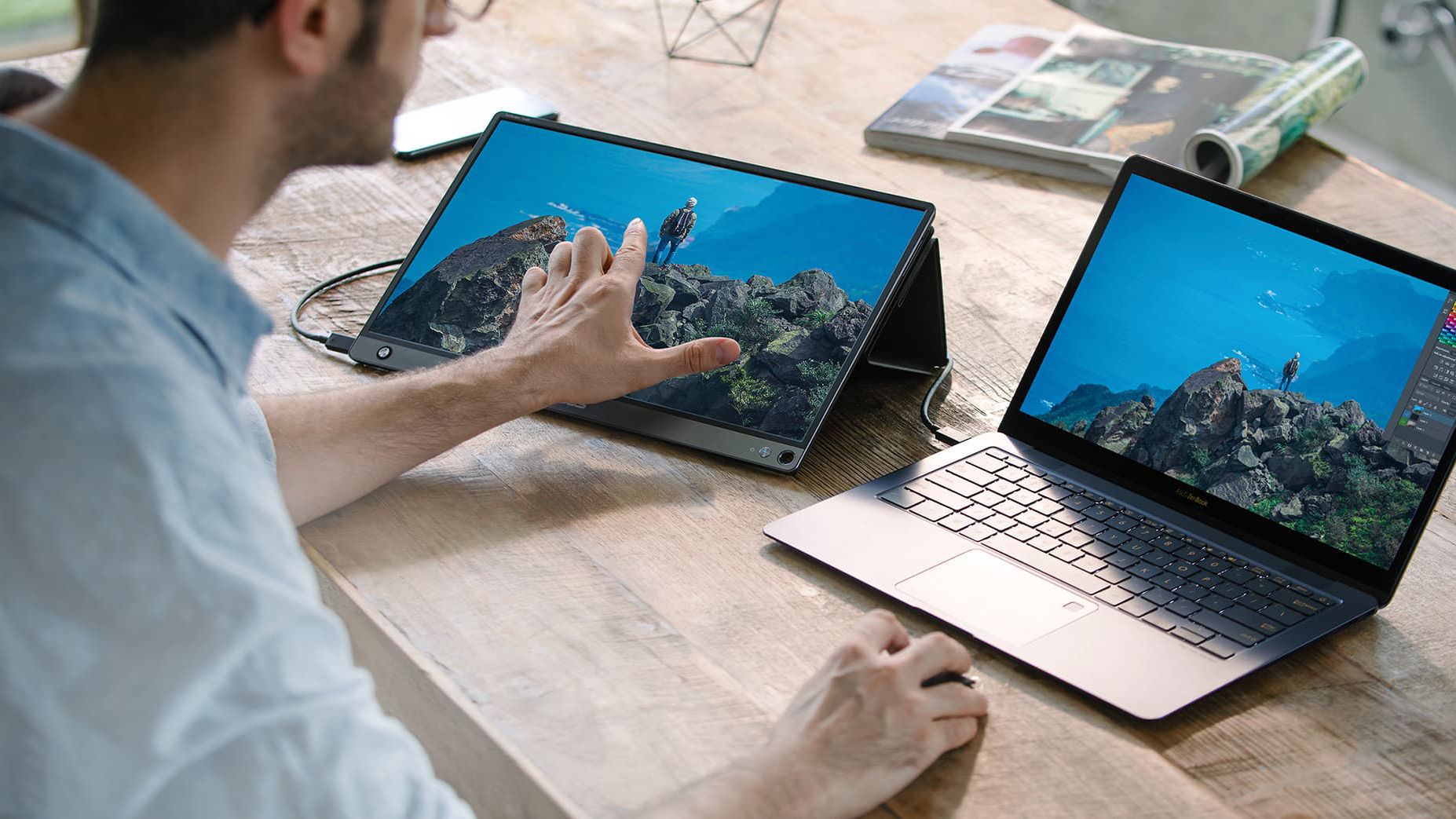
The best portable monitors are great as a second screen for your laptop or tablet when you're away from home. And you don't have to worry about picture quality. These days, you'll can enjoy Full HD (1920 x 1080) resolution, and IPS or OLED technology to give you excellent color, contrast accuracy and image quality, regardless of viewing angle.
And as the name suggests, these devices won't weigh you down. Similar in size and thickness to a typical laptop screen, portable monitors can slide into a laptop backpack with ease. And most feature a tablet-style cover that folds into a stand, making them easy to prop up next to your laptop.
Best of all, they don't need to be plugged into the wall, but can be powered from your laptop via USB. And some even have a built-in rechargeable battery, so you don't have to drain your laptop's. (A self-powered portable monitor is also ideal if you want to extend the screen space of your camera phone.)
In short, these best portable monitors can help boost your productivity while you're out and about. In this article, we reveal the best portable monitors on sale today, and explain what each has to offer.
• See also: Best monitors for MacBook Pro
The best portable monitors
Why you can trust Digital Camera World
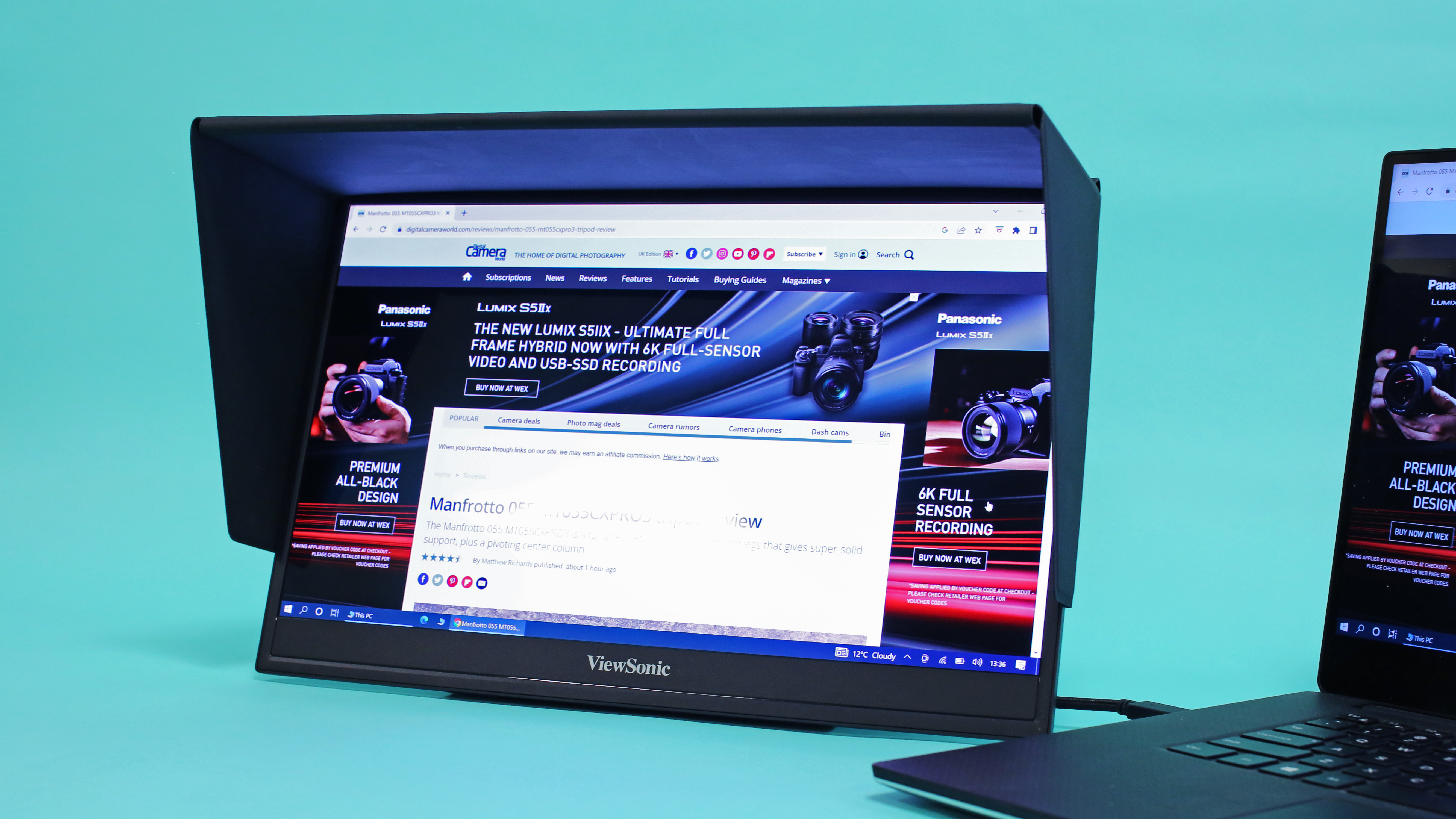

Specifications
Reasons to buy
Reasons to avoid
The VP16-OLED stands out thanks to it being one of very few portable monitors on the market based around an OLED display. Compared to a conventional LCD panel, an OLED screen is able to deliver better color accuracy, significantly better contrast, and much improved brightness and color consistency across the entire screen.
The VP16-OLED certainly translates these benefits into stunning real-world image quality. We found this to be one of the most color-accurate monitors we've ever reviewed, and our extensive testing also revealed the VP16-OLED excels in all measures of image quality.
Factor the superbly versatile stand, decent connectivity, plus a host of extra features, and there really are no weak links or compromises here - the VP16-OLED is everything a creative could want from a portable monitor.
See our full ViewSonic ColorPro VP16-OLED review
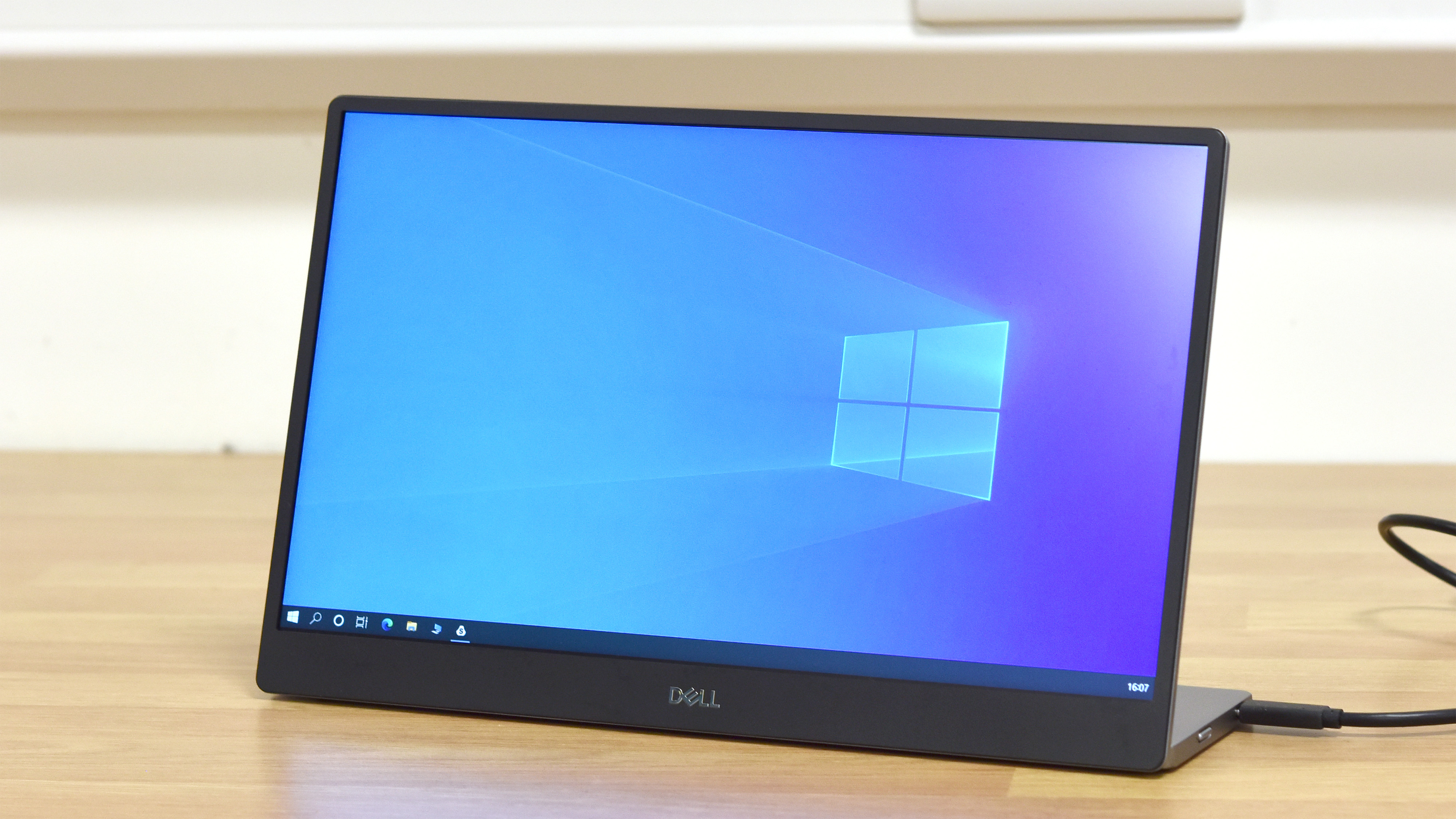

Specifications
Reasons to buy
Reasons to avoid
This is Dell's only portable monitor - but it is one of the best we have tested. The C1422H is a 14-inch, 16:9 widescreen display that sports a generous Full HD (1920 x 1080) resolution. That's high enough to produce a 158ppi pixel density on a screen this small - almost as crisp a 27-inch monitor running at 4K. The C1422H is based around an IPS LCD panel, which is ideal for discerning image or video editors: IPS LCD tech provides much more consistent color and contrast, regardless of viewing angle, than TN or even VA-based LCD units. It weighs only 590g and is also super-slim at just 1.43cm at its thickest. This is a monitor that can comfortably slot in a bag alongside your laptop, and Dell provides a nice soft sleeve for transportation. See our full Dell C1422H review.
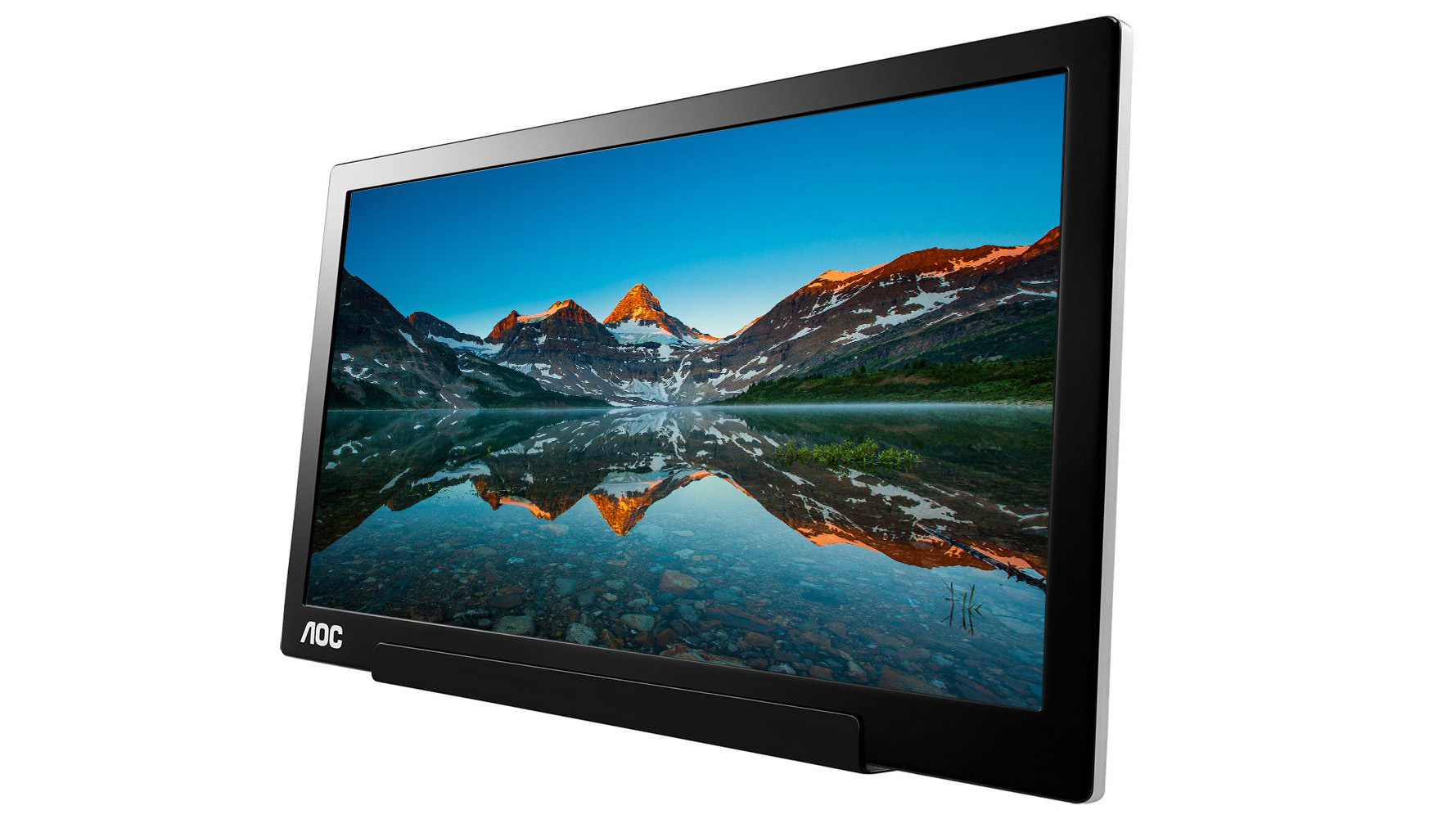
3. AOC I1601FWUX
Specifications
Reasons to buy
Reasons to avoid
Short on cash, but still want quality? Despite its affordable price, this 15.6-inch monitor still boasts a Full HD resolution, and it uses IPS display tech. So you can expect consistent color and contrast, along with wide viewing angles; although note that this is 160 degrees rather than the usual 178 you'd expect from an IPS display.
A USB-C connection, meanwhile, provides a simultaneous video and power feed to the monitor. That's important, because the otherwise-similar AOC I1659FWUX model uses an older USB 3.0 socket, and it's heavier at 1.2kg as well as being bulkier. So this 820g I1601FWUX is definitely the right choice, if you have a USB-C port on your MacBook.
On the downside, a 220 cd/m2 peak brightness is fairly weak if you're viewing under direct sunlight. And the gloss black casing and slightly large screen bezels don't exactly scream quality.
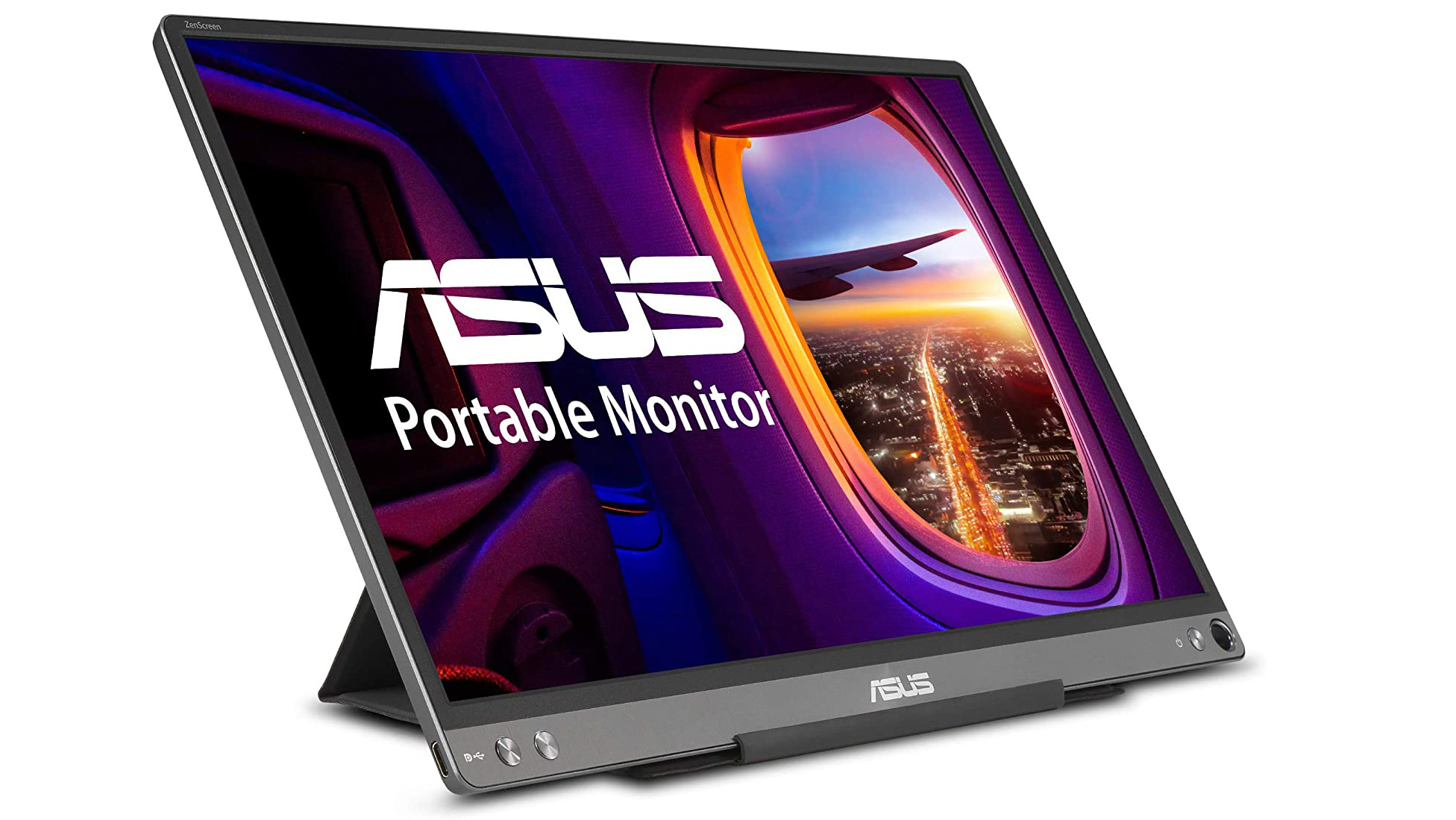

4. ASUS ZenScreen MB16ACE
Specifications
Reasons to buy
Reasons to avoid
In our view, the ASUS ZenScreen MB16ACE provides the best value for money, making it the best portable monitor for most people.
You get a great quality picture thanks to Full HD (1920 x 1080 resolution), IPS color and contrast accuracy, and a decent (though not spectacular) 250 cd/m2 brightness. Slim screen bezels keep the overall size small at 359.7 x 226.4mm, and just 8mm thick. There's a useful wraparound smart case cover that converts to a prop stand. And you tap into your laptop's battery via a single USB-C connection to power it up.
If you're worried about draining your laptop, though, go for the ZenScreen MB16AP variant, which packs a built-in 7800mAh rechargeable battery, giving you up to four hours of screen time.
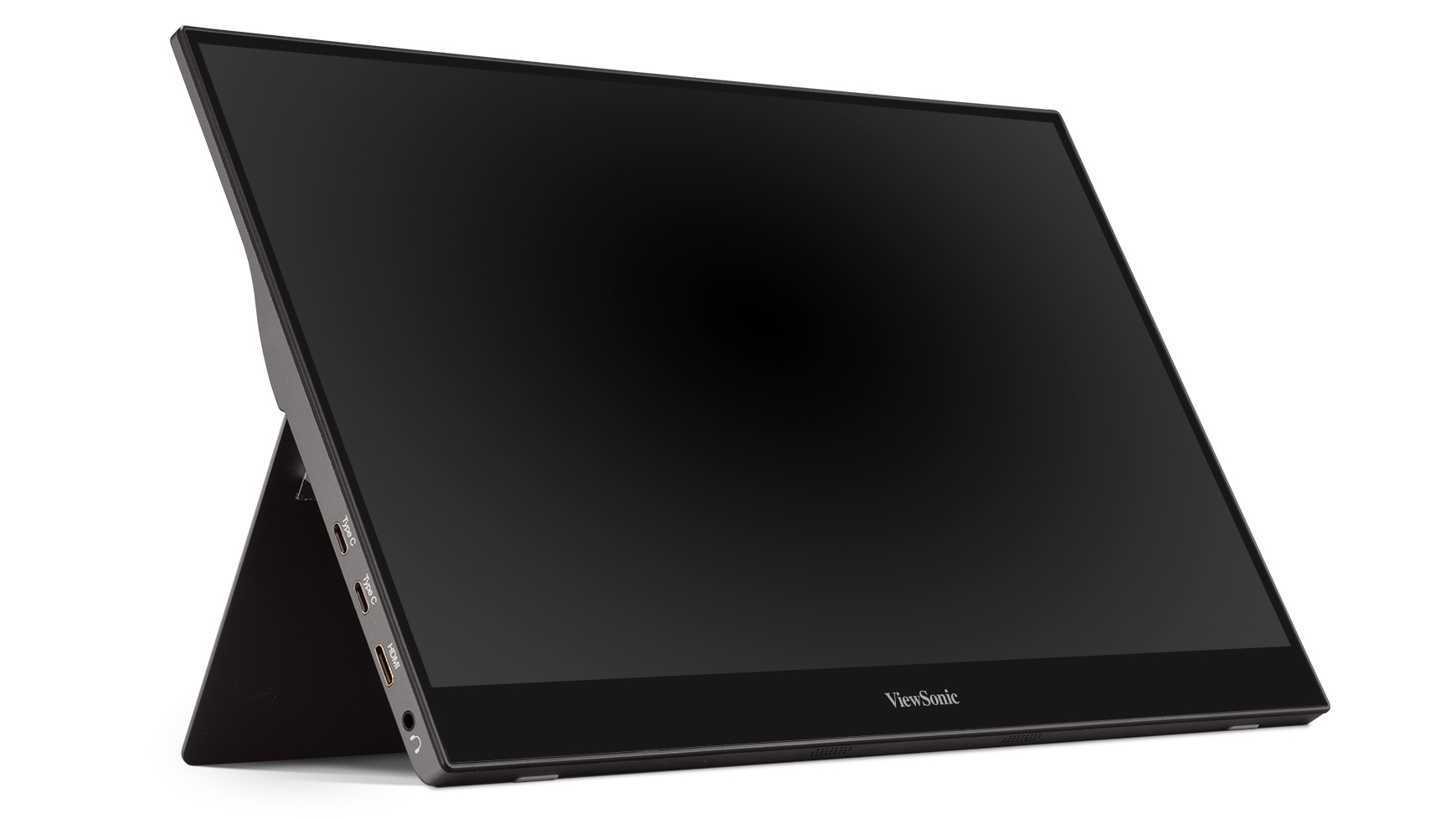
5. ViewSonic TD1655 Touch Portable Monitor
Specifications
Reasons to buy
Reasons to avoid
Is a touchscreen your priority when it comes to buying a portable monitor? Then here's our top recommendation. ViewSonic's15.6-inch TD1655 is only 15mm thick and weighs in at a mere 800g, but still gives you premium IPS display tech that promises wide viewing angles and consistent contrast.
The 1920 x 1080 Full HD resolution may not be 4K, but at this screen size it's easily enough for crisp image quality. An 800:1 contrast ratio is also impressive, although the 250 cd/m2 brightness lets it down a little.
The TD1655 can be conveniently powered straight from your laptop via a USB 3.2 Type-C connection, or even a mobile power bank, so you can use the screen alongside your phone without having to find a mains outlet. The Viewsonic VG1655 is a sister model for those who can live without the touchscreen functionality.
• See also: Best touch screen monitors
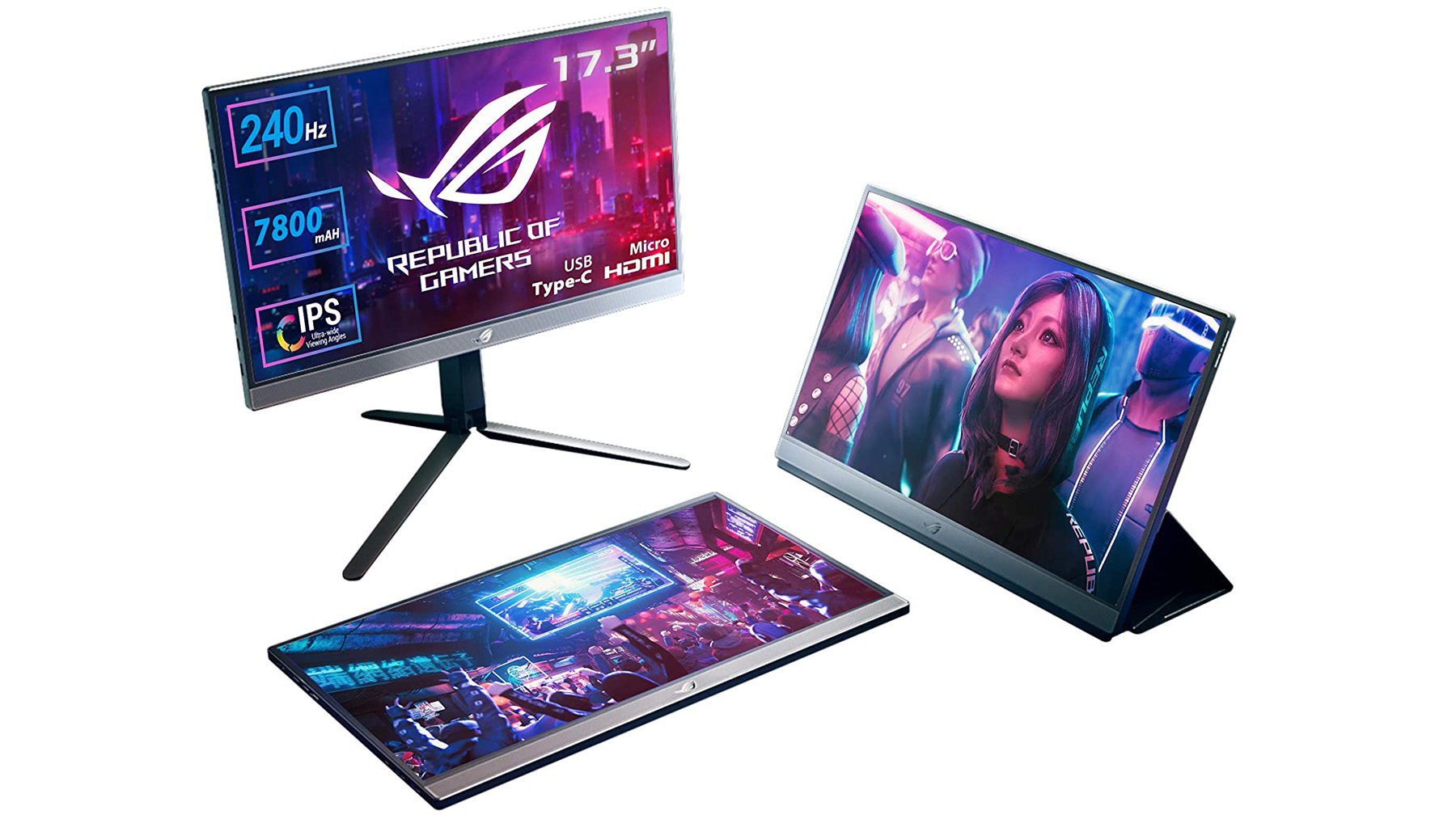
6. Asus ROG Strix XG17AHP
Specifications
Reasons to buy
Reasons to avoid
If you need a larger monitor than the models we've listed so far, then check out Asus' ROG Strix. It's built primarily for gaming on the go, with its larger than average 17.3-inch screen size designed to give a more immersive gaming experience. But of course, this also makes it pretty great for image and video editing.
That said, don't go thinking this will give you a larger preview area relative to toolbars and pallets alongside. The display resolution is still Full HD 1920 x 1080, so compared to a 15.6-inch portable monitor with the same resolution, the ROG Strix simply displays everything a little bit bigger.
But raw size isn't the only feature here. The 240Hz refresh rate is designed for super-smooth video playback and gaming, and the IPS panel boasts a seriously impressive 1,000:1 contrast ratio, along with 100% sRGB color space coverage and factory color calibration. There are stereo speakers up front as well. Positioning options are also well catered for, with a small tabletop tripod thrown in, along with a Smart Cover that doubles as a prop stand.
What's more, this display is especially unusual in the portable monitor market, because it conceals a 7800mAh battery, giving it 3.5 hours of mobile power at the fastest 240Hz refresh rate. That's great news if you don't want to suck your laptop or phone's battery life to power your portable monitor.
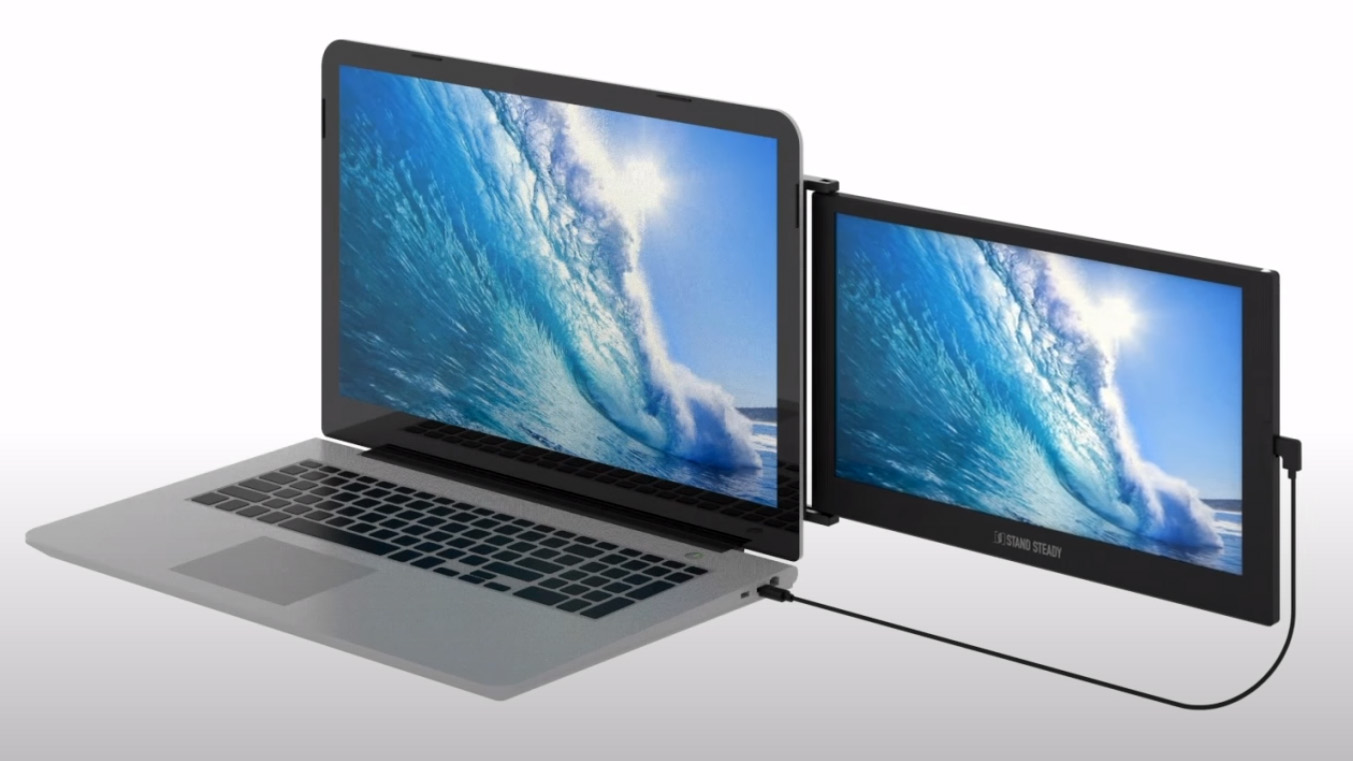
7. SideTrak Attachable Portable Monitor
Specifications
Reasons to buy
Reasons to avoid
Short on desk space? With most portable monitors, you'll need a large area to stand it alongside your laptop or smart device. This SideTrak monitor, though, attaches to the back of your laptop's screen and hinges out to sit alongside, so it takes up much less space. You can even use your laptop as the name intends – on your lap – with the SideTrak securely supported by your laptop.
The display's bracket attaches to a wide variety of laptops, via special metal plates that have been designed not to cause any damage to your device. And the sliding support bracket ensures the SideTrak can be positioned just where you want it, regardless of your laptop's screen size.
The 12.5 inches screen diameter isn't exactly spacious, but the 1920 x 1080 resolution does make it very sharp, and it uses IPS screen tech that should give reliable color and contrast. That makes it a great choice for photo viewing and editing. The 300 cd/m2 brightness is also respectable, as is the frugal 4.5W power consumption. And despite requiring the extra hardware bracket to attach to your monitor, weight is still impressively low at 748g.
This isn't a screen designed for gaming, though, as the 30ms response time is positively sluggish, and the 600:1 contrast ratio is nothing special. And more generally, you can find larger, better-specced portable monitors for less money. However, if you want to extend your laptop's screen in the most convenient way possible, the SideTrak could well be worth the extra outlay.
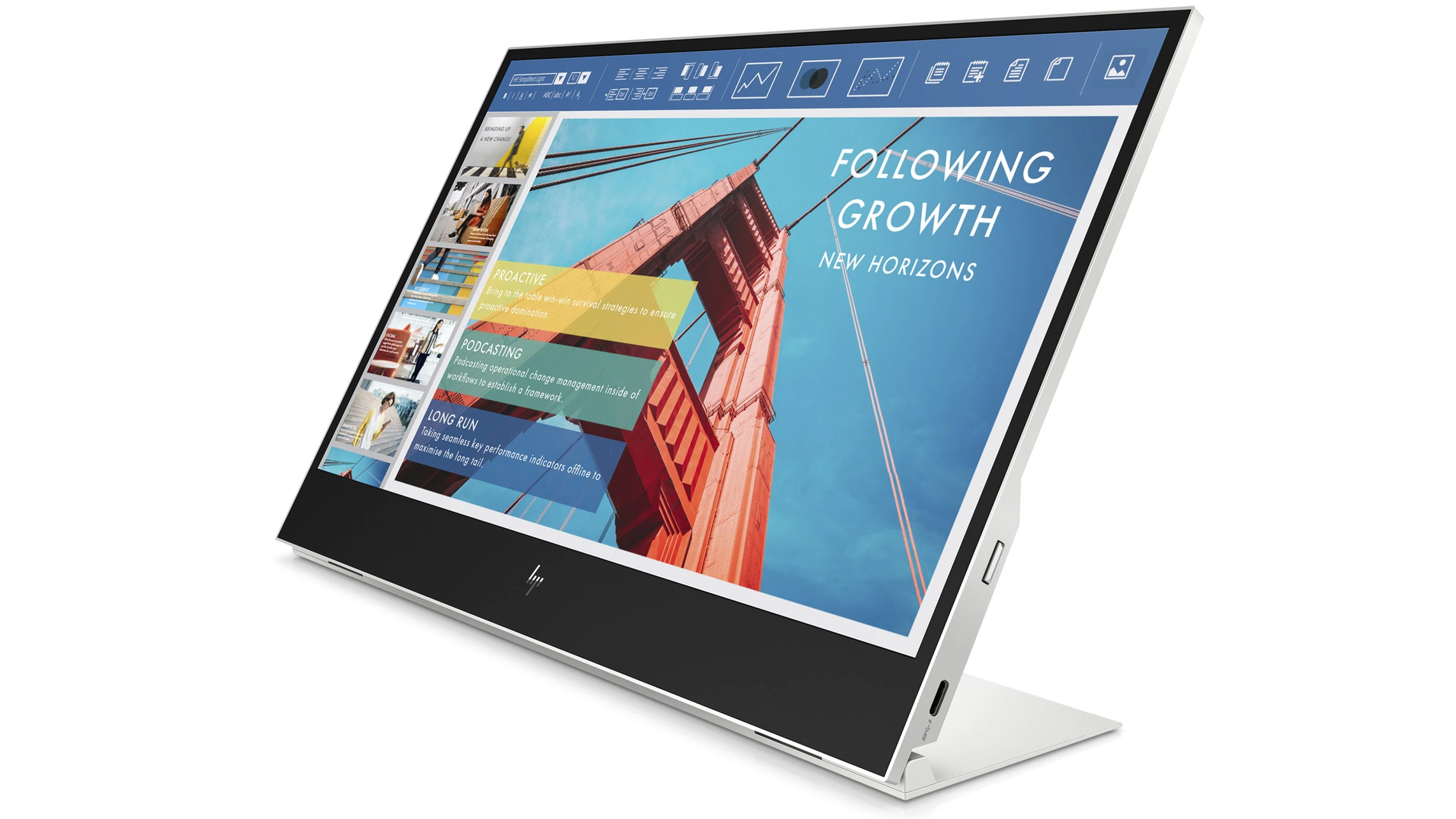
8. HP E14 G4 Portable Monitor
Specifications
Reasons to buy
Reasons to avoid
If portability is paramount for you, this 14-inch monitor may be the best pick for you, as it's slightly smaller than most of its rivals, and the screen is also a wafer-thin 15mm. Thankfully, you don't get a lower screen resolution: this is still a Full HD 1920 x 1080 panel, translating to super-crisp image quality due to the relatively small display area.
This is also a premium IPS screen, so expect accurate color and contrast, along with wide viewing angles. Brightness is also impressive for a portable monitor, peaking at 400 cd/m2. The panel's efficient 6W typical power consumption means it can be powered direct from your laptop via USB-C.
How to choose a portable monitor
How easy is it to set up a portable monitor?
Setting up a portable monitor is usually as simple as connecting a regular wired mouse or card reader. If you're using a reasonably modern laptop with a USB Type-C port that supports Power Delivery, you can connect a portable monitor to this with just a single cable and it should just work - plug and play - with no additional power connection required.
Are portable monitors really that 'portable'?
Yes! Portable monitors are usually slimmer and lighter than even the most thin and light laptop. They're designed to slip in alongside a laptop in your bag, and usually incorporate a compact, well designed stand that folds neatly away when not in use. As power comes from your laptop, there's also no need to carry a bulky power brick just for the portable monitor.
How can I ensure decent image quality?
Look for a portable monitor that uses IPS (in-plane switching) LCD technology. This enables much better colour and contrast consistency than older, cheaper, older TN (twisted nematic) panels. Thankfully, most portable monitors now use IPS technology, meaning there shouldn't be an obvious difference in image quality between your laptop's display and the portable monitor alongside it.
How we test monitors
We evaluate a monitor with particular attention given to its core image quality, including brightness, contrast, color vibrancy and accuracy. While this can - and will - be assessed by the experienced eye of our professional reviewer, some manufacturer screen specs can only be definitively judged by an 'electronic eye' - a monitor calibrator. Where possible, a calibration device will be placed on the screen to verify its advertised color space coverage, brightness output and consistency, and factory color calibration accuracy. Beyond image quality, we'll also scrutinise the monitor's display and data ports to ensure acceptable connectivity, and will give a thorough assessment of build quality, including the range of ergonomic adjustment in its stand. Only then will we determine if a screen is worthy of use by a discerning imaging or video enthusiast.
Read more
The best monitors for photo editing
The best monitors for video editing
The best ultrawide monitor
Best USB-C monitors for photo editing
Best keyboard for video editing
Everything photographers need to work from home
Best broadband deals in the UK
Best webcam for home working
How to edit videos: video editing tips
Best laptop stands
Get the Digital Camera World Newsletter
The best camera deals, reviews, product advice, and unmissable photography news, direct to your inbox!
Ben is the Imaging Labs manager, responsible for all the testing on Digital Camera World and across the entire photography portfolio at Future. Whether he's in the lab testing the sharpness of new lenses, the resolution of the latest image sensors, the zoom range of monster bridge cameras or even the latest camera phones, Ben is our go-to guy for technical insight. He's also the team's man-at-arms when it comes to camera bags, filters, memory cards, and all manner of camera accessories – his lab is a bit like the Batcave of photography! With years of experience trialling and testing kit, he's a human encyclopedia of benchmarks when it comes to recommending the best buys.

